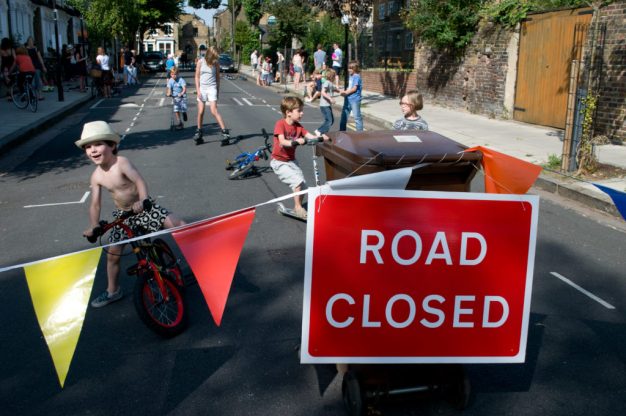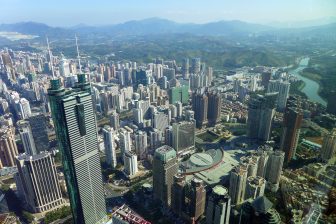
How ‘school streets’ could create safer, healthier cities
Recognition of these issues has led public health experts, architects and urban planners to discuss how to design cities to respond to the pandemic.
One idea put forward has been the establishment of “school streets”: closing roads outside schools to motor traffic during school drop-offs and pick-ups.
School streets often involve other local action, too. This includes promoting active travel, such as walking and cycling, to get to school, getting local people involved in citizen science projects to monitor air quality and putting on events to celebrate the road closure.
Our research focuses on public health and air pollution. We recently worked with Holt House Infant and Carterknowle Junior schools in Sheffield, as well as with Sheffield City Council, to pilot the first school street in the city. The Sheffield pilot provides an excellent example of the valuable role that school streets could play in our cities, especially during a pandemic.
Changing urban space
During the COVID-19 pandemic, school streets may have an important role because they change how urban space is used directly where people live. This could aid physical distancing, support walking and cycling, and protect children and their families from increases in car traffic and air pollution as lockdowns are lifted.
In fact, school streets have been part of some UK councils’ emergency COVID-19 plans. In London, Hackney council is developing ambitious plans to introduce 40 new school streets to rebuild and recover from COVID-19 in a greener and safer way.

Local action
For the school street pilot in Sheffield, a busy road next to the schools was closed at drop-off and pick-ups for one week in November 2019. This coincided with the annual Road Safety Week campaign, so the school also promoted walking, scooting and cycling to school. They arranged events to make use of the closed road, such as daily afternoon cycling or scooting between the two schools.
We evaluated the pilot together with the school community. Parents, children and residents were asked their views. Comments were monitored on social media. Parents organised traffic counts, and we worked with the Urban Flows Observatory at the University of Sheffield to monitor air quality – specifically particulate matter and nitrogen dioxide – in the school grounds.
These pollutants have been associated with a range of negative health effects for children and adults. They can cause breathing difficulties, lung cancer, strokes and heart attacks, and affect children’s lung development.
We learned that there is support locally to create safer and healthier school streets. One resident commented that:
This is the first time it feels like the children have been put first by making them more visible and reducing the traffic.
We also learned that School Streets create a new space for children and families to play, interact, feel safe, be active and independent. As a parent said:
Such an amazing feeling walking to school with the kids on their bikes knowing that they’re safe.
Some people did get frustrated as road journeys were delayed. It was also a challenge to assess the impact on air quality around the schools. Although we collected our own data before and after the pilot, a high pressure weather system affected air pollution during the week. The effects of traffic displaced onto other local roads, and also potentially going slower and idling, was also unclear.
Lessons for the future
To better assess the air quality impacts, we would have needed the road closure to be longer and to have had access to a longer period of air quality data that is accurate at a neighbourhood level.
In the UK, the Department for Environment, Food and Rural Affairs (Defra) has a network of sensors and uses measurements from these to model air pollution. However, there are too few sensors to develop high-resolution maps of air pollution at this local level.
The lack of coverage and resourcing for outdoor air quality monitoring – and a lack of data for air quality inside schools – may make it difficult to evaluate other UK school street initiatives.
Yet we know from air-quality readings during the 2020 lockdowns that reduced traffic can result in consistently lower nitrogen dioxide levels compared with previous years. This suggests that school streets could create safe and healthier urban space for children and their families.
Implementing school streets requires local authorities to have enough resources to oversee them. They also need to be developed in ways that reach out to and engage diverse urban communities, so that the school street is designed to work for each local context.
Local authorities have had their budgets cut drastically in recent years, and COVID-19 means that direct community engagement is challenging. Still, our experience suggests that there are bold council, school and community leaders out there who are up for this challenge.![]()
Amy Barnes, Lecturer in Public Health (Policy), University of Sheffield and Maria Val Martin, UKRI Future Leaders Fellow, University of Sheffield
This article is republished from The Conversation under a Creative Commons license. Read the original article.




